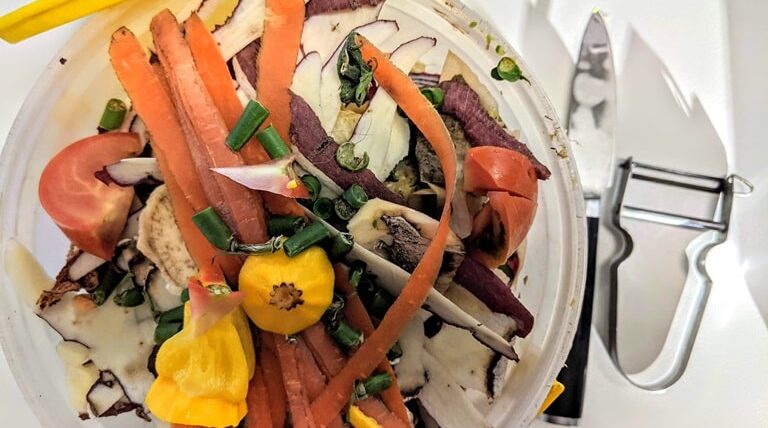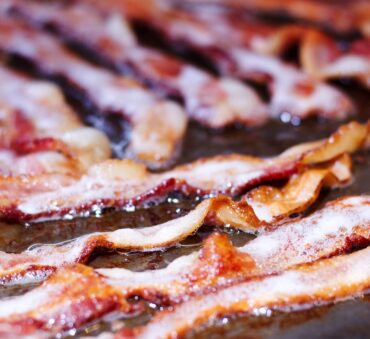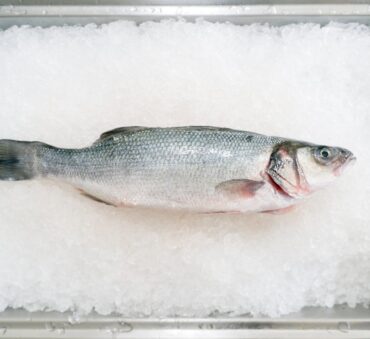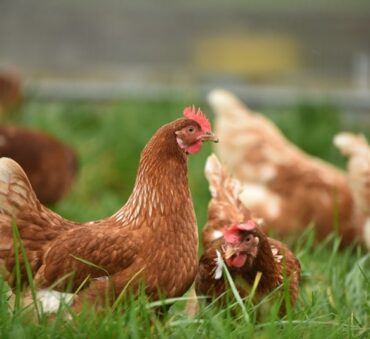Every year, billions of pounds of food are wasted, contributing significantly to greenhouse gas emissions and landfill overuse.
The good news?
We could transform this problem into a sustainable solution.
Enter composting – a simple yet powerful process with the potential to revolutionize our approach to food waste.
Let’s explore all about composting food waste, the step-by-step process, its benefits, the do’s and don’ts, and more.
Key Takeaways
- Making compost from food waste significantly reduces landfill contributions and enriches soil health, offering a sustainable solution to waste management.
- Effective composting involves balancing greens and browns, maintaining proper moisture, and ensuring adequate aeration for efficient decomposition.
- At the household level, the food waste composting process can be easily managed through methods like vermicomposting, yard composting, or using dedicated compost bins.
- For businesses, implementing composting programs can lead to substantial waste reduction and cost savings, contributing to corporate sustainability goals.
Why is Composting Food Waste So Important?
Food waste is the single largest component (24%) of US landfills.
It not only exhausts valuable landfill space, but it also squanders the resources used in food production, such as water and energy.
Once food waste ends up in landfills, it decomposes anaerobically, releasing methane, which contributes significantly to climate change.
However, composting provides an environmentally friendly alternative, transforming food waste into nutrient-rich soil.
This happens through the aerobic decomposition of organic matter, resulting in a significant reduction of methane emissions compared to landfill decomposition. The produced compost is a valuable resource that:
- Improves soil fertility and structure
- Promotes higher yields in agriculture
- Reduces the need for water, pesticides, and fertilizers
Composting Food Waste Benefits
By choosing to compost your food waste, you can bring myriad advantages, from enhancing soil health to reducing our carbon footprint.
Let’s check out some of the main benefits of composting food waste:
Reduces Landfill Waste
EPA data shows that food waste comprises about 22% of all discarded municipal solid waste in the US. By diverting this organic material from landfills to composting processes, we can alleviate the burden on landfills and cut down on methane emissions. Cities with municipal composting programs can significantly reduce their landfill contributions.
This shift not only prolongs the lifespan of landfills but also fosters a sustainable waste management model. Through composting, we turn food scraps from an environmental liability into a valuable resource, helping us get one step closer to ecological responsibility.
Creates Nutrient-Rich Soil Amendments
Ever wondered how your kitchen scraps can contribute to a flourishing garden?
Through composting, food waste decomposes into a rich, organic material teeming with essential nutrients for plants. This natural fertilizer enhances soil health, increasing its water retention and fertility without the need for chemical alternatives.
Studies have shown that using compost can improve soil structure, lead to higher crop yields.
Supports Soil Health and Plant Growth
Compost made from food waste is rich in organic matter and contributes to soil fertility, promoting robust plant growth.
It introduces beneficial microorganisms that enhance soil biology, aiding in nutrient uptake and plant resilience against diseases. Additionally, compost-enriched soil retains water more efficiently, reducing the need for frequent watering.
Increasing Cost Savings for Businesses
Have you ever considered how much a restaurant or grocery store could save by reducing their waste?
By diverting food scraps from landfills to composting programs, businesses can significantly cut down on disposal costs. Additionally, organizations that compost contribute to a greener brand image, potentially attracting more eco-conscious consumers.
Reduces Carbon Footprint
When food waste is sent to landfills, it decomposes anaerobically, producing greenhouse gas.
But we can convert food waste to compost, significantly reducing methane emissions.
For instance, studies show that composting can reduce the carbon footprint of food waste by about 50%. This shift not only mitigates climate change but also represents a proactive step towards a more sustainable, low-carbon lifestyle.
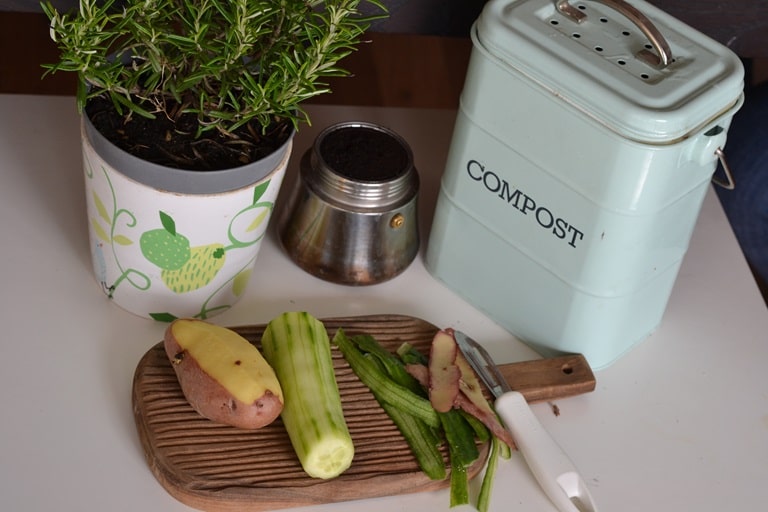
Commercial Food Waste Composting
Composting for businesses, particularly within the food industry, is not just an environmental choice – it’s a strategic business decision.
The scale of food waste generated by restaurants, supermarkets, and food manufacturers is substantial. For example, about 84% of unused food in restaurants is thrown away, while only 14% is recycled.
Implementing an effective composting program involves:
- Assessing waste volumes
- Understanding local composting regulations
- Finding the right balance between operational feasibility and sustainability goals
For businesses ready to embark on this journey, partnerships with waste management services are invaluable. Companies like Shapiro offer specialized food waste services, assisting businesses in developing and executing effective composting strategies.
Household Composting: How to Compost Food Waste at Home
Composting food waste at home is a simple yet impactful way to contribute to environmental sustainability. But how do you compost food waste in your own home?
Here are some methods of composting food waste for beginners:
- Vermicomposting: Ideal for small spaces, vermicomposting involves using red worms to break down food scraps. Set up a bin, add worms, and feed them your food scraps, avoiding meat and dairy. The worms will turn the waste into nutrient-rich compost.
- Garden composting: If you have outdoor space, create a compost pile or bin in a sunny or partly shaded area. Alternate layers of green materials (like vegetable scraps) with brown materials (like leaves or shredded paper). Keep the pile moist and turn it regularly to speed up decomposition.
- Composting bins: For a more structured approach, use a composting bin, which can be either an open bin for a yard or a sealed container for indoors. Fill the bin with food scraps, ensuring a balance of greens and browns. Turn the contents occasionally to aerate and facilitate decomposition.
Are you ready to try these methods and create compost from food waste?
Do’s and Don’ts of Food Waste Composting
Navigating the world of food waste as compost can be simple, yet it’s important to be aware of certain do’s and don’ts to ensure a successful composting process.
What Food Waste Can Be Composted
When it comes to composting, knowing what food waste can be turned into valuable compost is key. Here’s a list of common compostable food items that can help turn your kitchen scraps into garden gold:
- Fruit scraps: Apple cores, banana peels, and other fruit remnants are perfect for composting.
- Vegetable peels and scraps: From carrot tops to potato peels, most vegetable waste can be composted.
- Coffee grounds and filters: Coffee grounds are a great addition to compost, providing nitrogen.
- Tea bags: Used tea bags (minus any staples) can be composted.
- Eggshells: Crushed eggshells add valuable calcium to compost, but they should be rinsed first.
- Bread and grains: Stale bread, rice, and other grains can be composted in moderation.
- Nutshells: Except for walnut shells, which can be toxic to plants, most nut shells are compostable.
- Cooked foods: Composting cooked food waste is possible as long as you’re sticking to simple cooked foods, like plain pasta or rice.
- Corn cobs and husks: These items take longer to decompose but are good for compost.
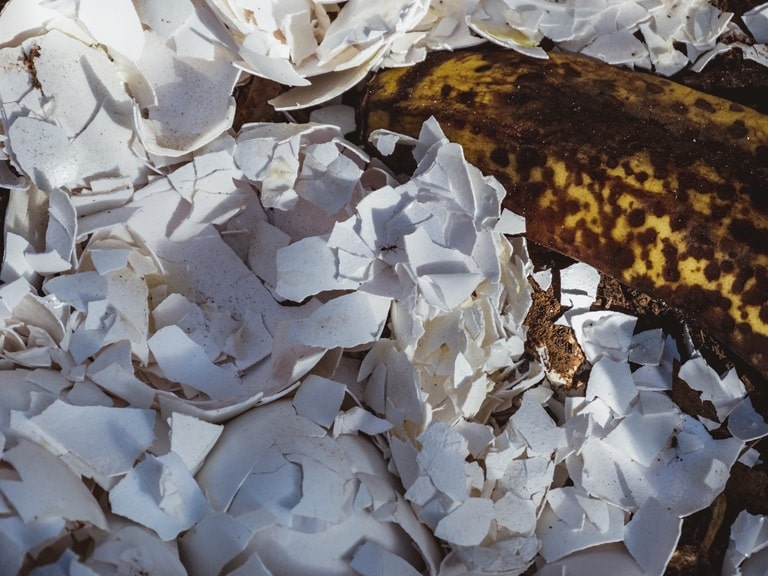
What Food Waste Can’t Be Composted
While composting is a fantastic way to recycle food waste, you can’t compost all food waste. Here’s a list of items that should not be composted:
- Meat and fish scraps: These can attract pests and create unpleasant odors.
- Dairy products: Items like butter, milk, and cheese can also attract pests and cause odor issues.
- Fats and oils: Cooking oil, grease, and fatty food scraps can disrupt the composting process.
- Bones: They decompose very slowly and can attract animals.
- Processed foods: Foods that contain preservatives can harm the microorganisms essential for composting.
- Citrus peels in large quantities: While small amounts are okay, too many citrus peels can make the compost too acidic.
- Diseased or insect-infested plants: These can spread diseases to other plants when compost is used.
- Pet waste: Dog and cat feces can contain pathogens harmful to humans.
- Glossy or coated paper: This type of paper often contains inks and chemicals unsuitable for composting.
Composting Process: Top Affecting Factors
Effective composting requires a careful balance of several key factors, ensuring the process runs smoothly and efficiently:
- Moisture content: The ideal moisture level is similar to a wrung-out sponge – damp but not dripping wet. Too little moisture slows down decomposition, while too much can lead to odor problems.
- Carbon/Nitrogen ratio: Often referred to as the C/N ratio, this is a critical balance between ‘greens’ (nitrogen-rich materials like food scraps) and ‘browns’ (carbon-rich materials like dry leaves). A ratio of about 30:1 (carbon to nitrogen) is generally recommended for optimal composting.
- Oxygen content: Regularly turning the compost pile ensures adequate oxygen supply and prevents the creation of odor-causing anaerobic conditions.
- Temperature: The heat generated within a compost pile is a sign of microbial activity. Maintaining a temperature between 90°F to 140°F is ideal for effective composting and for killing weed seeds and pathogens.
- The surface area of the pile and particle size: Smaller particles decompose faster. Chopping or shredding food waste in compost can accelerate the process. The overall size of the compost pile also matters – a larger pile retains heat better.
- Volume of the material being composted: The quantity of compostable material influences the efficiency of the process. Smaller volumes may not retain heat well, while too large a pile may become difficult to manage.
What to Know About “Greens” and “Browns” in Compost
Striking the right balance between ‘greens’ and ‘browns’ is crucial.
But what exactly are these components?
“Greens” are nitrogen-rich materials, which add moisture and quick energy for microorganisms in the compost. Examples include kitchen scraps like fruit and vegetable peels, coffee grounds, and grass clippings.
On the other hand, “browns” are carbon-rich materials, providing bulk and allowing air to filter through the compost pile. Common household “browns” include dry leaves, straw, wood chips, and even shredded paper.
Ideally, your compost should have a carbon-to-nitrogen ratio of about 30:1. An imbalance can lead to the following issues:
- Too many greens can cause the compost to become overly wet and smelly.
- An excess of browns can slow down the composting process.
If you encounter problems like bad odors or slow decomposition, adjusting the green and brown ratio is often the key to resolving them.
Composting Regulations & Guidelines to Know About
Composting is subject to various regulations and guidelines, primarily set by state and local governments under frameworks like the Resource Conservation and Recovery Act (RCRA) overseen by the EPA.
Across the US, composting policies can vary widely. Here are some resources on the various composting policies:
- The Institute for Local Self-Reliance and the Sustainable Economies Law Center compile various types of compost-related rules and the states that have enacted them.
- ReFED’s US Food Waste Policy Finder is a tool for researching wasted food and organics recycling policies.
- The National Resources Defense Council and the Environmental Law Institute highlight model policies for compost procurement, aiding in understanding and implementing effective compost use.
- The US Composting Council provides information on state compost regulations, offering valuable resources to help states update their composting regulations. They also maintain a map detailing states’ organic bans.
- The Zero Food Waste Coalition offers a toolkit and template legislation for initiating organics ban in local communities.
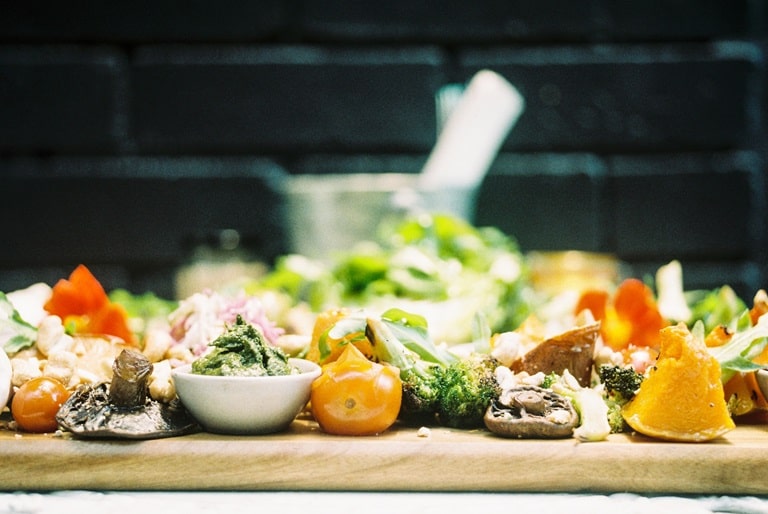
Food Waste for Composting: Final Words
Composting not only offers a sustainable solution to food waste but also plays a crucial role in the health of our environment.
If you’re seeking expert guidance and effective solutions in managing food waste, Shapiro is here to help. With our comprehensive food waste management services, we can transform your waste into a resource, contributing to a healthier planet and a sustainable future.
Composting Food Waste: FAQs
Got any other questions on food waste composting? Keep on reading:
Yes, composting is an effective way to recycle food waste. Through this process, you can turn food waste into valuable compost instead of it ending up in landfills.
Cooked food often contains oils, fats, and salt, which can attract pests and create odor problems in compost piles. Composting cooked food waste can also disrupt the balance in your compost.
Yes, most uncooked food waste like fruit and vegetable scraps, coffee grounds, and eggshells can go into a compost bin.
Some compostable packaging can go into food waste, but it’s important to verify if it’s suitable for home composting or requires industrial composting facilities.
Yes, food scraps are excellent for composting. They add necessary nitrogen to the compost pile, aiding in decomposition.
The composting time can vary, but typically, food waste takes about 3 to 6 months to fully decompose in a home composting setup.
Anaerobic digestion is a process where organic waste is broken down in the absence of oxygen, producing biogas. Composting, on the other hand, is an aerobic process where waste decomposes with oxygen, resulting in nutrient-rich soil.
Baily Ramsey, an accomplished marketing specialist, brings a unique blend of anthropological insight and marketing finesse to the digital landscape. Specializing in educational content creation, she creates content for various industries, with a particular interest in environmental initiatives.
